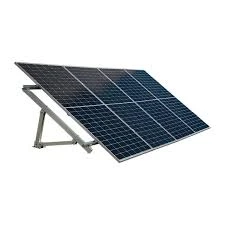Exploring the Efficiency of Solar Panels Used in Space Environments
The Efficiency of Solar Panels in Space
Solar panels have revolutionized the way we harness energy, particularly in space applications. With the increasing reliance on satellites and space missions, the efficiency of solar panels in this environment has become a focal point of research and development. In this article, we will explore the factors that contribute to the efficiency of solar panels in space, the technological advancements that have been made, and the challenges that still need to be addressed.
Understanding Solar Panel Efficiency
Solar panel efficiency refers to the percentage of sunlight that is converted into usable energy by the solar cells. In space, solar panels typically outperform their ground-based counterparts due to the absence of atmospheric interference. On Earth, factors like cloud cover, air pollution, and atmospheric absorption can reduce the sunlight that reaches solar panels, whereas in the vacuum of space, solar panels receive direct and uninterrupted sunlight.
The most common type of solar cells used in space applications are silicon-based, but newer technologies, such as multi-junction solar cells, are gaining traction. Multi-junction cells, which consist of multiple layers of semiconductor materials, can capture a broader spectrum of sunlight, leading to higher efficiency rates – often exceeding 30%. In contrast, traditional silicon solar panels usually achieve efficiencies between 15% and 22%.
Advances in Space Solar Technology
The ongoing advancements in solar panel technology have significantly improved their efficiency. Historically, space missions relied on solar panels that could withstand extreme temperatures and radiation levels. The recent development of more resilient materials has allowed engineers to design solar panels that can maintain a higher efficiency over extended periods in space.
One prominent example of this innovation is the use of gallium arsenide (GaAs) in solar cells. GaAs cells can achieve significantly higher efficiency than silicon-based cells, making them particularly suitable for space applications. NASA's Space Power Modular Probe (SPMP) demonstrated this technology by using GaAs solar cells that achieved efficiencies exceeding 40%. Such advancements have proven critical for long-duration missions, as they extend the operational lifespan of solar panels by enhancing their performance against the harsh conditions of space.
efficiency of solar panels in space

The Role of Positioning and Orientation
Another critical factor influencing the efficiency of solar panels in space is their positioning and orientation to the sun. Solar panels are often equipped with tracking systems that adjust their angle throughout the orbital period to ensure they receive maximum sunlight. This dynamic orientation increases energy absorption by up to 20%, allowing satellites to generate more power for their onboard systems.
Moreover, missions to other celestial bodies have prompted engineers to adapt solar panel designs specifically for those environments. For example, lunar missions must account for prolonged periods of darkness and extreme temperature fluctuations. Designing panels that can efficiently gather sunlight during the lunar day while withstanding the harsh conditions of the lunar night poses unique challenges, but innovative solutions are being developed to meet these demands.
Challenges and Future Directions
Despite the notable advancements, several challenges remain in maximizing the efficiency of solar panels in space. One of the primary concerns is the degradation of materials due to radiation exposure. Solar panels must be designed to minimize this degradation and maintain operational efficiency over time. Additionally, thermal management is crucial; excessive heat can reduce the efficiency of solar cells, necessitating advanced cooling solutions, especially during high irradiation periods.
Looking to the future, as humanity aims to expand its presence beyond Earth, the efficiency of solar panels will play a vital role in sustainable space exploration. Initiatives like the Artemis program, aiming to return humans to the Moon, and future Mars exploration missions, will require highly efficient, durable solar energy systems to support human life and technological operations.
Conclusion
The efficiency of solar panels in space continues to be an area of critical importance. As technology evolves, we see remarkable improvements in the design and function of solar panels. The challenges posed by the space environment are being met with innovative solutions, paving the way for the next generation of solar energy systems. Success in this field not only enhances the capabilities of satellites and space missions but also offers valuable insights that can be applied to renewable energy technologies on Earth. As we venture further into the cosmos, the quest for optimal solar efficiency remains an essential component of our exploration and sustainability efforts.
-
String Solar Inverter: The High-Efficiency Solution for Smart Solar EnergyNewsJul.14,2025
-
Revolutionizing Rooftop Energy with the Power of the Micro Solar InverterNewsJul.14,2025
-
Power Independence with Smart Off Grid Solar Inverter SolutionsNewsJul.14,2025
-
On Grid Solar Inverter: Powering the Future with Smart Grid IntegrationNewsJul.14,2025
-
Monocrystalline Solar Panels: High-Efficiency Power for the Future of Clean EnergyNewsJul.14,2025
-
Bifacial Solar Panel: A Smarter Investment for Next-Generation Energy SystemsNewsJul.14,2025







